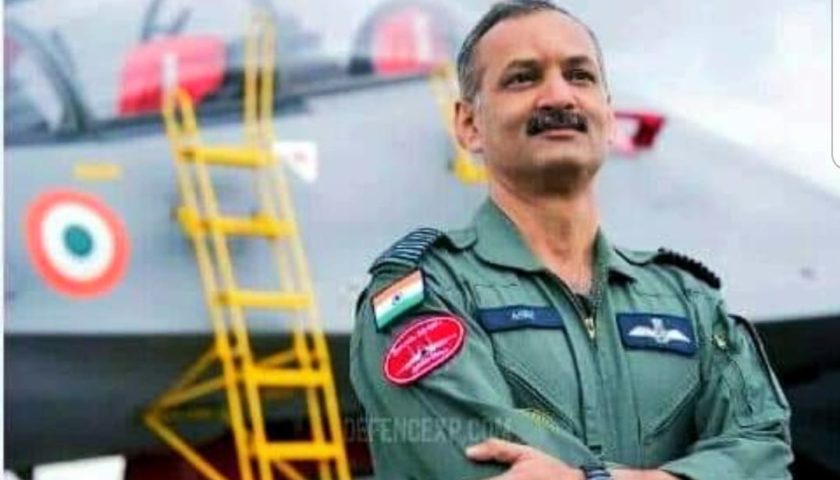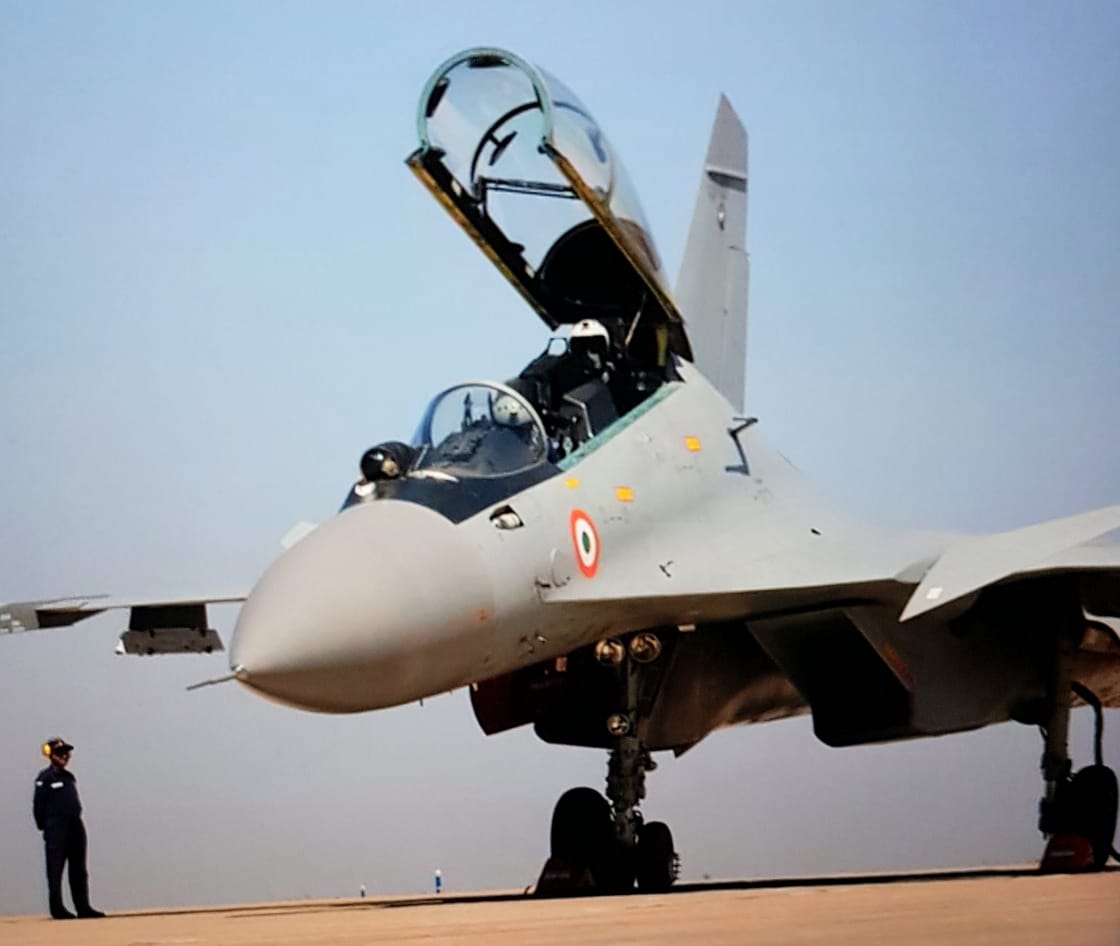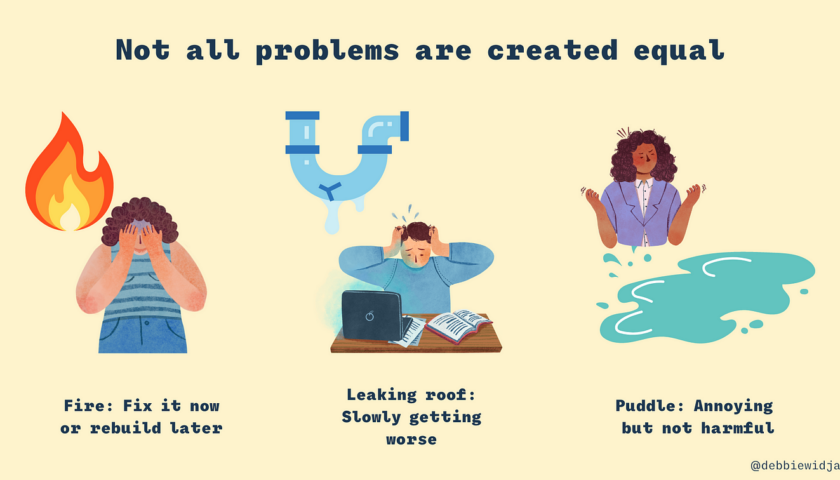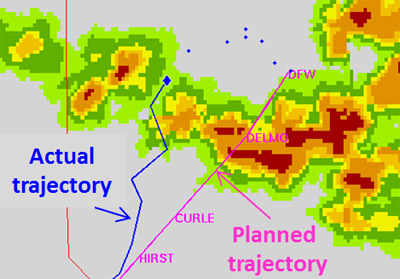An air show is a public event where aircraft are exhibited. They include a static display, aerobatics demonstrations. The event is also simultaneously held as business ventures, and trade events where the aerospace and defense industry is promoted. Flying displays are some of the most popular spectator events in the world. It is estimated that flying displays and similar events attract over 10 million spectators each year. The companies use the display to entice the public and create an opinion. The display pilot plays a very important role where he/she showcases not only the aircraft profile but also capabilities in terms of maneuvering to the best advantage. They use the limited airspace to stay visible, use engine noise to attract attention, and above all to entertain. In this article, we will meet one of the display pilots and learn the intricacies of the trade.
Gp Capt Ashutosh Srivastav (Retd) has more than 27 years of experience of fighter flying. He started fighter flying on MiG 21 and thereafter converted onto Sukhoi 30K and Sukhoi 30MKI. He was a part of the team who inducted Su-30 aircraft in the Indian Air Force in 1997. Since then he had been flying Su-30 aircraft till 2018. He had the distinction of being a Display Pilot on Su-30 aircraft. He has showcased his LL Aerobatics skills over various places to name a few like Aero India air show, over Marine drive Mumbai, Carnic, Port Blair, and Pokhran Fire Power Demonstration.

- Tell us when was the first time you did flying display and on which aircraft?
A. In 2001, I was selected to be a part of the Su-30 Aerobatic Team. The team consisted of three Su-30 aircraft. The team was active and performed for almost one and a half years. I enjoyed this thrilling experience to its fullest. Thereafter, in 2004, I was selected for single aircraft Low-Level Aerobatics on Su-30MKI and this is where my journey commenced.
- Public safety is of utmost importance during the display. This display also needs to be of the highest standards. So what are the criteria for the selection of display pilots?
A. The selection process for flying display is very stringent and is approved by the highest authority. The selection criteria pan out from medical fitness, total flying experience, on type flying experience to behavioral aspects. First and foremost is medical fitness which goes without saying. The qualifying requirements in terms of total flying hours and flying hours on the type of aircraft has been laid down by the Regulatory Authority. The Commanding Officer of the Sqn assesses the pilots for proficiency in handling the aircraft within the entire flight envelope and emergency handling before recommending for approval. He also assesses the pilots on behavioral aspects like level of decisiveness, confidence, ability to perform under pressure in a calm & composed manner, and adherence to rules & regulations. The training of the pilot starts after approval.
- These displays are of utmost importance for public and personal safety. What kind of precautions are observed during the display to avoid mishaps?
A. The safety of the audience and display is paramount. Unambiguous safety parameters have been laid down for the pilot as well as the ground staff. For the safe conduct of the display, a Flying Display Director is assigned. An experienced pilot is positioned as the display supervisor. He has the veto power to stop the display if he adjudges the maneuver is unsafe. To provide a clutter-free environment and avoid the distraction of display pilot a dedicated radio frequency is maintained for display. Complete radio silence is maintained on this frequency till completion of the display. A safe minimum distance from the viewing gallery is demarcated. This is known as Foul Line. Any breach of this line results in the disqualification of the pilot for further display. Ground cameras are set in order to closely monitor the safety parameters of the display, debrief the pilots, and to assess the situation in case of a breach. During the profile to ensure safety, all the complex parts of the maneuver are performed away from the viewing gallery. The aim is to display the aircraft, not the pilot.
- All flying for displays or events, especially aerobatics, is a specialized form of aviation that frequently involves flying the aircraft close to the edges of the permitted flight envelope. When did you start learning these aerobatic maneuvers in military flying? How aerobatic maneuvers in the military are different from display aerobatics? How do you train for display aerobatics?
A. The display manoeuvres are a subset of military flying. These manoeuvres form the basics of aircraft handling in a combat environment. In a display, individual manoeuvres are carried out whereas in combat the combination of manoeuvres is required to achieve success. The exposure to display flying started from the days of formation aerobatic display. The experience of formation aerobatic team laid the foundation for carrying out manoeuvres with accuracy and smoothness. It inculcated an eye for details like correct parameters at each checkpoint during a manoeuvre. For instance, to ensure correct Loop manoeuvre the height and speed combination must be correct at each checkpoint. If not, then the manoeuvre must be aborted. The individual manoeuvre was practised regularly and repeatedly under supervision with a progressive decrease in the operating altitude. As expected, as it can be, the progressive decrease in this operating altitude rapidly changes the visual perspective, i.e., how you see the ground rushing towards you in a vertical manoeuvre. This escalates the tendency of initiating recovery from a manoeuvre without achieving the parameters. It could jeopardise the safety of the aircraft. For instance, a visual perspective at 200 m above ground has a massive change from that at 300 m. In the practice sessions, the focus was to achieve accuracy in the execution of the manoeuvre as per stipulated parameters.
- The manoeuvres require high degree of professionalism and personal fitness. Can you elaborate?
A. As I mentioned earlier, fitness is paramount when it comes to flying display. Display flying requires a shift in attitude from military flying, which is to say, from an aggressive combat mode to a more sangfroid and composed mode.
Professionalism is achieved through thorough practice. It implies that the pilot must know his own limitation as well as the aircraft. With practice, the pilot enhances his own envelope and learns to operate the aircraft to its advantages. The sole emphasis of display aerobatics is to achieve the correct entry and finish parameters. There should not be any tendency to persist in the maneuver with incorrect parameters or position. More importantly, it is the ability to abort if the parameters are not correct at any stage in the maneuver.
- Every maneuver is precise and well planned for the success of the entire display. The display actually starts from the ground when you walk to the aircraft and to be precise on time. Could you elaborate on this, please?
A. Each display profile is well-timed out and it is mandatory to finish the display in the allotted time slot, otherwise, it would upset the sequence of display. The preparation starts with the briefing by Flight Display Director. The briefing includes weather summary, operating conditions, and time slots. Thereafter, the pilot goes through his own briefing about airfield procedures and display profiles. The take-off time is taken as T-0. From T-0, the taxi time, start-up time, walk to aircraft, briefing time is calculated in descending order. For example, if T-0 is 1500 hours then the taxi time could be 1450, start-up time 1440, walk to aircraft 1430 and the briefing time could be 1400 hours. This is the only way meticulous timing can be ensured.
- The maneuver sequence depends on weather and available space. Which is your favorite place and time for display?
A. To ensure the safety of display aircraft there are strict weather criteria in terms of minimum visibility and cloud base have been laid down for display. The height of obstructions around the display area governs the minimum height during display. All display profiles have a truncated version known as Horizontal Profile or Flat Profile. In case the cloud base is below minima then the vertical maneuvers would be cut out and only horizontal maneuvers would be carried out. If the cloud base is below minima for a horizontal profile, then the display would be called off. A sheet of clouds or puffs of clouds above minima over the display area is best suited for display. The display aircraft is clearly visible throughout the profile. The relative movement against the backdrop of clouds enhances the appreciation of the maneuver. For example, the rate of descend in the Tail Slide maneuver is better appreciated by spectators against the clouds as compared to the clear sky. The position of the sun also needs to be considered while planning the display. If the sun is high in the sky, then the spectators would have difficulties watching the display. Hence the most preferred time for display is morning and evening hours when the sun is at low angles. My preferred time is the evening block. As far as location is concerned, a display area with a prominent linear feature is the best option. The runway provides the best reference for maneuvering and displacement during the profile. Based on the type of terrain, obstructions, and viewing gallery the minimum height, commencement direction and positioning turn for the profile are decided. Every location has its own challenges. Like oversea, there is no depth perception and hence a pilot must be very careful during the display.
- During the flight, It must be difficult to not only remember the sequence of maneuvers but also the safety gates before each maneuver. What procedure or checks you had formulated for safety and success?
A. The correct sequence of maneuvers is one of the most critical criteria to ensure a safe display. As it is said ‘practice makes a man perfect’, the preparation on the ground, number of practices under the supervision, and thorough briefing/ debriefing ensures that a display pilot knows the profile by heart. Even at midnight if you wake a display pilot up and ask for a sequence of maneuvers, he must be able to rattle out without fail. Before display, a thorough briefing is carried out including all safety measures and escape routes. Before the take-off, a quick recap of the sequence of maneuvers is done. During the profile, I used to keep calling out to myself what is the next maneuver. Like as I am completing a loop, I would say positioning turn to the left.
- If something goes wrong, all display pilots have escape manoeuvre. What was your escape manoeuvre? Does it vary depending on the place, time and weather? Did you exercise escape manoeuvre anytime or had to cut short on display due to any circumstances like weather or unserviceability?
A. During the display aircraft is operating at its extremities and close to the ground. There is a very limited reaction time for safe recovery. Hence the recovery actions are like the second nature of the pilot. The hands move automatically for emergency actions. The first action is to stay in a clear area and avoid heading towards spectators. The escape route depends upon the terrain, obstructions in the area, location of spectators, and expected direction for landing airfield. Actions in case of abort or failure for each mano is clearly briefed every time before display. On two occasions I had to abort the display due to technical problems. In the first case, I could recover and landed safely. However, in the second one, I had to eject close to the display area since the aircraft was on fire. I moved away from the viewing gallery, assessed the possibility of landing at the nearest airfield, however, considering the extent of the fire, decided to carry out safe ejection.
- What was your favourite manoeuvre which had the public on its feet?
A. Su-30MKI has one unique maneuver which no other aircraft does and that is Loop Tumble Yaw. You can call it a signature maneuver. It is the combination of maneuvers where the aircraft commences a loop and on the top of the loop instead of completing the loop, the pilot pulls on the stick to get minimum radius and as the aircraft nose comes up to the original direction, yaw is induced. The overall visual effect is aircraft completes the half loop, comes out in the same direction at the top of the loop and now rotating like a helicopter at the same place, of course with rate of descent. This mano is done twice in the profile. This is the one that gets maximum applause. Apart from this I also love the Tail Slide maneuver in profile which also gets huge applause.
- Tell us about the comments that you received from fellow aviators and the general public? The good, bad and ugly ones?
A. The most satisfaction you get when the profile has worked out in a copybook style. All parameters, displacements, and maneuvers have worked out well. That is the most professionally satisfying feeling. For example, in 2006, we were performing our display over Port Blair. In the first practice profile, the visual references were not well identified due to which I could not get the parameters and displacements correct. Although the debrief from the display supervisor was affirmative, I was not satisfied with my performance. Later, in my second practice, I got the references right and the profile was performed satisfactorily. Back in 2005, we were practicing for Aero India Air Show in Bangalore, the weather was not conducive and so our profile was limited to horizontal maneuver. This restricted profile did not impress our fellow display pilots from other countries. Later, when the weather cleared up, we were able to perform our full profile including the signature maneuvers that ended up changing their opinion about Su-30MKI display. Overall, we have always received appreciation from our fellow aviators, display pilots, and the spectators.
- Regrettably, despite all the precautions and safety procedures mishaps do happen during air shows. What can be done to minimize the risk?
A. The small mistakes during the profile have resulted in disasters. The incorrect altimeter setting, misreading of altitude, incorrect sequence of maneuvers have been the main causes of accidents. There is no shortcut to briefed procedures, established checkpoints and the escape routes. The availability of highspeed cameras provides close monitoring of profiles by the Display Director. Now he should be able to quickly notice any change in maneuver and be able to caution the pilot. Also, there should not be any complacency as one gains experience. I used to consider every display as if I am doing it for the first time. This ensured that I always follow the protocol during the display.
Thanks Ashu. Many thanks for lovely displays which made us proud of being part of this wonderful blue uniform. You have been a motivator for so many of us who wish to be a fighter pilot or just part of aviation.
For all the guys who love air shows, see you at AF Station Yelhanka for 13th edition of Aero India show from 03-07 Feb 2021.
Jai Hind.



